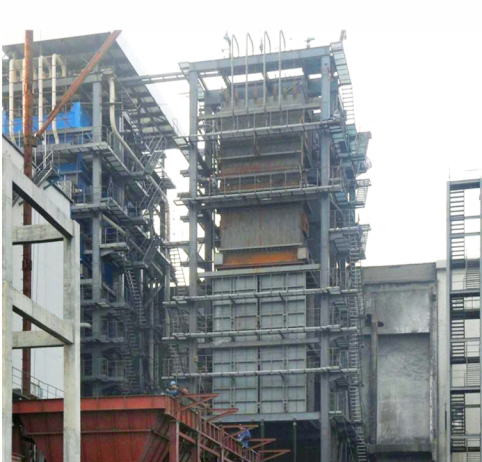
This boiler adopts circulating fluidized bed combustion technology. In the combustion system, a coal feeder sends coal into the furnace through the coal chute. The air required for combustion is supplied by the primary and secondary air fans. The primary air, preheated by the primary air preheater, is introduced into the water-cooled air chamber below the furnace through air ducts on both sides and enters the combustion chamber through nozzles on the water-cooled air distribution plate. The secondary air, preheated by the secondary air preheater, is injected into the furnace through nozzles distributed on the front and rear walls of the furnace, supplementing the air and enhancing turbulence and mixing. The fuel and air mix in a fluidized state within the furnace, where combustion occurs, and heat is exchanged with the heating surface. The flue gas in the furnace (carrying a large amount of unburned carbon particles) undergoes further combustion and heat release in the upper part of the furnace. The flue gas, along with a large amount of material, leaves the furnace and enters the shell-type steam-cooled cyclone separator, where most of the material is separated and returned to the furnace through the return feeder, achieving circulating combustion. The separated flue gas exits the boiler through the economizer, air preheaters, and tail flue. The use of circulating fluidized bed combustion technology, combined with the addition of limestone to the furnace, can significantly reduce SO2 emissions in the flue gas, while the use of low-temperature and staged air supply combustion technology can effectively inhibit NOx formation.
